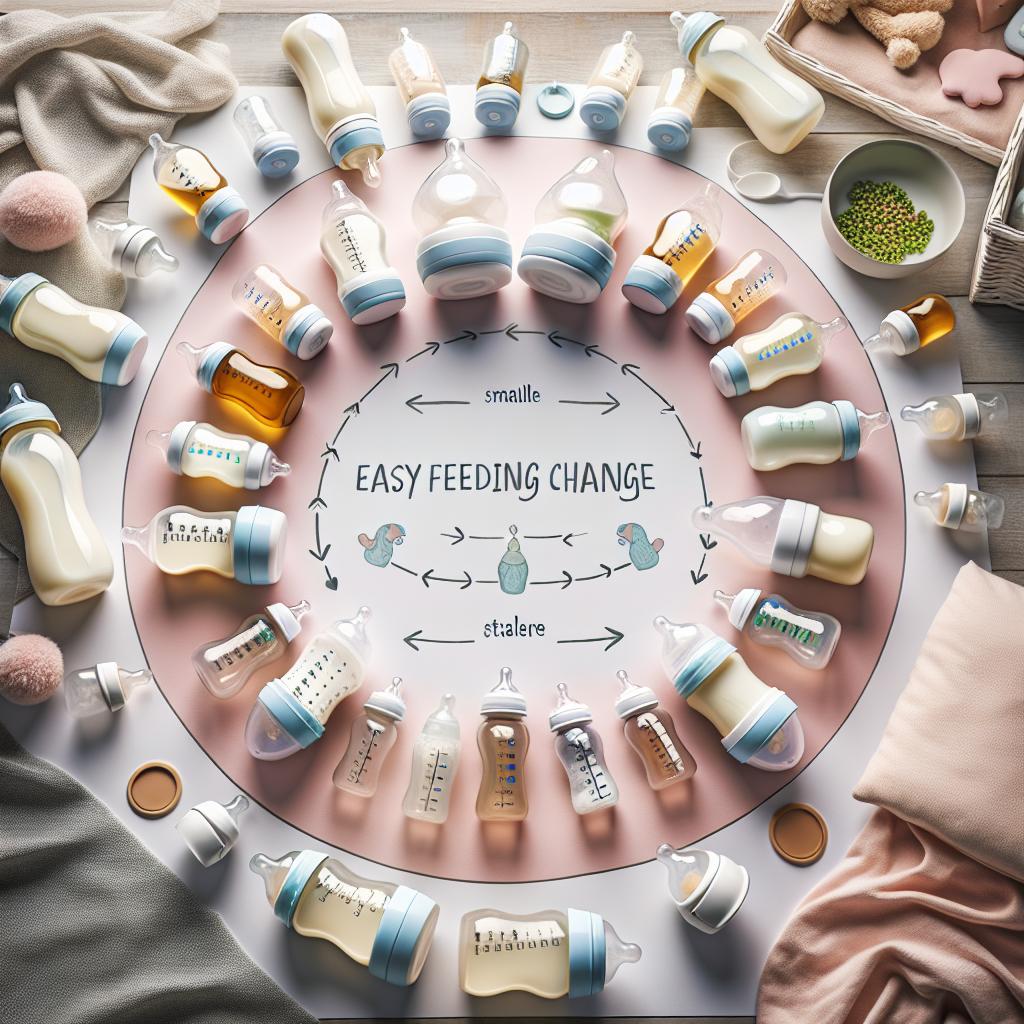Choosing the Right Transition Baby Bottles
Parents seeking to make feeding changes will inevitably encounter the challenge of transitioning from breastfeeding or using baby bottles to using sippy cups. It might seem daunting, but by choosing the right transition baby bottles, you can achieve an easy feeding change and a seamless transition.
What Makes a Good Transition Baby Bottle?
Before diving into the options, it’s crucial to understand the features that set good transition baby bottles apart from the others:
- Easy-grip handles: These make holding the bottle easier for tiny hands.
- Flow control: The rate fluid is released should be customizable to suit your baby’s feeding style.
- Soft spout: It should simulate the natural feeling of breastfeeding to make the transition more comfortable.
- Removable parts: This will let you simplify the bottle as your baby gets more skilled at drinking.
The Benefits of Biomimetic Bottles
Biomimetic bottles are a relatively new trend in infant feeding. These bottles are designed to mimic the natural breast closely, offering a seamless transition for babies who are used to breastfeeding. The nipples are designed to be as natural as possible, which can help reduce instances of nipple confusion. You can learn more about these innovative bottles on our blog post about how biomimetic bottles are shaping parenting trends.
Top Seamless Transition Bottles
- NUK Simply Natural: They are designed to mimic the shape, flow, and movement of mom’s breast, for a comfortable and natural feeding experience.
- Philips Avent Natural: A soft, wide-shaped nipple promotes a natural latch on, making this bottle great for breastfed babies.
- Enfamil Slow-Flow Soft Nipple Nursette Bottles: These are good for paced feeding and the gradual flow can help prevent choking and spit-up.
Making the Transition Easier
With the right transition baby bottles at hand, you can now focus on making the switch even smoother. Here are a few tips:
- Timing is crucial: Respond to your baby’s cues – don’t force the change if they’re not ready.
- Gradual introduction: Start by offering the transition baby bottle once a day during a usual feeding time.
- Be patient: It might be a couple of tries before your baby fully accepts the switch.
- Involve familiar people: Having someone your baby is comfortable with can make the transition easier.
For more tips on making the transition from breastfeeding to bottle-feeding an easy feeding change, read our post on parenting tips for making the bottle switch seamless.
The Bottles You Need for a Seamless Transition
Using a Drinking System that Grows with Your Child
The right transition baby bottle should not just simplify the transition from breastfeeding to bottle-feeding, but it should also offer a future-forward design. As your little one grows, their feeding needs progress too. A bottle that can evolve with your child is an excellent investment.
Ideally, you want to look for bottles that can be converted into sippy cups, or even later, regular drinking cups. These bottle systems usually come with various top pieces that you could change out as your baby gets more skilled and confident with their drinking abilities. Hegen offers several transition bottle options that can be converted into a sustaining drinking system.
Understanding Your Baby’s Specific Needs
Every baby is unique in their own ways, and so are their feeding needs. What works for some, might not work for others. This goes beyond just the formula you use, and also involves the type of bottle you offer them.
Observe your baby’s drinking habits, mealtime quirks, and their reaction to the nipples on the bottles. Some babies might have sensitive gums and prefer softer nipples. Find a bottle that accommodates all of these considerations to make the transition even smoother.
Top Picked Transition Baby Bottles
Here are a few more popular choices that parents often swear by:
- Nanobebe Baby Bottle: This bottle is designed for swift and easy breastmilk heating and cooling. The shape encourages self-feeding, making it great for transition.
- Dr. Brown’s Natural Flow Bottle: It comes with a unique vent system which prevents air bubbles and helps reduce feeding problems like colic, spit-up, burping, and gas.
- Minbie Bottle: With a patented nipple design, this bottle offers a more natural and intuitive drinking response.
Overcoming Bottle Aversion
It’s important to remember, transitioning from breast to bottle can be a significant change for your little one, and sometimes they might resist this change. But don’t worry – bottle aversion is a common occurrence and can be rectified by choosing a bottle that is designed specifically for the transition.
If needed, seek expert advice from lactation consultants or paediatricians. They can provide insights and tips based on your specific situation and your baby’s needs.
A Word on Bottle Hygiene
Lastly, regardless of your chosen bottle, maintaining adequate bottle hygiene is uncompromisable. Ensure all parts of the bottle are thoroughly cleaned and sterilized before each feed. Many of the latest bottles come apart for easy cleaning, ensuring optimal hygiene for your baby’s feeding experience.
To conclude, the perfect transition baby bottle combines comfort, ease of use, adaptability and hygienic considerations into one package. Patience and understanding go a long way to promoting a seamless transition, so don’t rush. For more support and resources, reach out to the parenting community or consult professional counselors.

